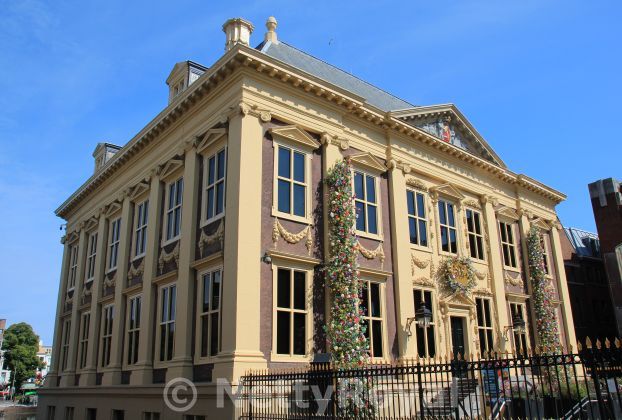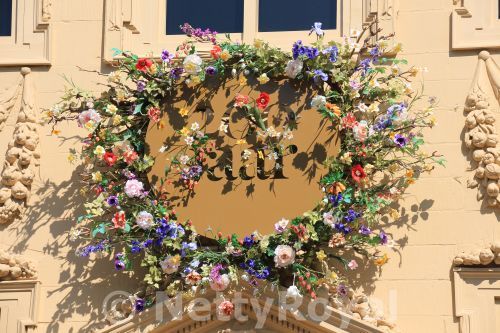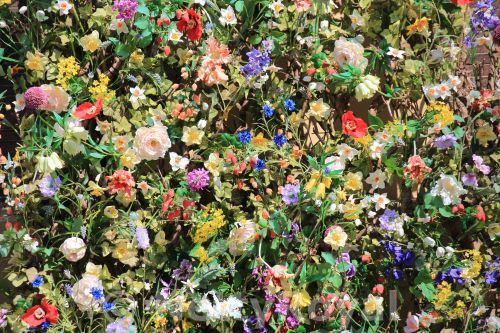When someone mentions the Mauritshuis in The Hague in a royal context, it is most of the time because of royal visitors, or because of its collection of art. But a long time ago the building used to be a royal residence. Recently I passed the building, that is celebrating its 200th anniversary of a museum this year, during a visit to The Hague. Because the area is being renovated, I couldn’t make my usual walk over the Binnenhof (Inner Court), that houses both houses of the States General of the Netherlands, the Ministry of General Affairs and nextdoor to the museum also the office of the Prime Minister of the Netherlands, that is situated in a small tower.
But it was the Mauritshuis that caught my attention, although I only admired its facade this time. Because the Mauritshuis became a museum in 1822 there are among others special exhibitions. But the building is also in bloom. Down the facade are two colourful flower waterfalls (imitation flowers), that continue into the foyer. Outside, on the forecourt, there are also 24 flower planters with different kinds of flowers, that will be changed every six weeks. The “impossible bouquet” is inspired by the flower still lifes of the 17th century. Inside earlier this year one could also visit the exhibition “In Full Bloom”.



Its history
Count Johan Maurits of Nassau-Siegen – hence the name Mauritshuis (house of Maurits) – bought a plot of land bordering the Binnenhof and its pond in 1631. During the years that he was a gouvernor of Dutch Brazil 1636-1644 a house in Dutch Classicist style was built by the wellknown architects Jacob van Campen and Pieter Post. They created a two-storey building that was strictly symmetrical. There were four apartments and a great hall. Johan Maurits died in 1679, and was occupied afterwards by the Maes family. The house was being leased to the Dutch government. There was also a cupola, that unfortunately was destroyed in a fire in 1704, as was most of the interior. The house however was restored.
Only in 1774 the building was opened as an art gallery. The French seized the collection when occupying the Netherlands in 1795. Only a part of that collection returned in 1808. The Dutch state bought the house in 1820 and two years later the Royal Cabinet of Paintings and the Royal Cabinet of Rarities were opened. After 1875 only art was on display here. In 1995 the Mauritshuis has been privatised, and the foundation rents the building from the state. King Willem-Alexander reopened the museum in 2014 after it had been expanded with part of the nearby Sociëteit de Witte.
Nowadays visitors can see a small permanent exhibition about Count Johan Maurits. On the basis of eleven works of art from his personal collection, his story, that of Dutch Brazil and the Mauritshuis are being told. He was appointed as Governor of the colony Dutch Brazil by the Dutch West India Company. At the time the Dutch were known as slave traders. The residence in The Hague was build with his Brazilian income and Johan Maurits also played an important role in the transatlantic slave trade – at least 24,000 enslaved Africans were transported to Brazil under his rule. It were the slaves that kept the sugar mills running. Texts in the room and the multimedia tour mention this past.
